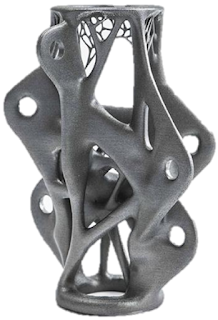FEM: Mesh quality and body simplification (Part 2) - Symmetry
-
Have ever you asked: What is symmetry in FEM? What are benefits using symmetry in FEM? How to performing symmetry in FEM? In this article, we will briefly answer these questions
Symmetry:
Have ever you asked: What is symmetry in FEM? What are benefits using symmetry in FEM? How to performing symmetry in FEM? In this article, we will briefly answer these questions
Symmetry:
There are some cases which the problem size can
be reduced if a symmetry can be checked. The advantage of that is to decrease
the computational time to solve the problem. Another advantage is the
possibility to visualize internal stress distribution in the body.
To ensure the symmetry of problem, all these
conditions must be observed as for symmetry [Erdogan
Madenci • Ibrahim Guven]:
- Geometry;
- Material properties;
- Loading;
- Degree of freedom (DOF) constraints;
It is important to remember that in modal
analysis, generally is not possible to use symmetry, as the most of mode shapes
are not symmetrical.
Basically, there are four types of symmetry:
Axisymmetry:
This symmetry is about a central axis, where the body is created from a revolve
shape.
This type of symmetry can provide the most
simplified model. For instance, the 3D model above,
could be converted to a 2D model using axisymmetry.
Rotational
symmetry: When repeated segments are arranged about a central axis. The body
can be created from only one segment, for instance, turbine rotors.
Figure 3 - Example of
rotational symmetry. Due to holes, this body cannot be represented as
axisymmetry. FONT: ANSYS
Planar
or reflective symmetry: When one half of body is a mirror image of the other
half.
Repetitive
or translational symmetry: It happens when segments are
repeated along a straight line. In this case, only one segment can be analyzed.
Considerations about material
proprieties, loadings and displacements:
We don´t need necessarily have a
homogeneous material or loading on the body to have a problem symmetry. In some
cases, is just a matter to find where is the symmetry axis or plane to do the
problem reduction. Below, some examples of these cases:
Figure 6 - Example of symmetry in non-homogeneous material or loading. FONT: [Erdogan Madenci • Ibrahim Guven]
Another point of attention of
reduction through symmetry is to correction of boundary conditions (loadings,
supports, and connections). For
instance, when there is punctual load, in some cases, this load must be reduced
proportionally of symmetry reduction (a half, a quarter etc) if the load are on
the symmetry plane or axis.
Figure 8 - Due to symmetry condition, the load of right side case must be the half of the left case.
Some adjustments must be done to the constrains too. The faces or edges of the reduced body, must have the same behavior as the complete body. It means to create extra supports that mimic the natural behavior of body without its reduction.
Figure 9 - Extra supports must be added to mimics the
natural behavior of complete body. FONT: ANSYS
There are some considerations
used to solid, surfaces or bars/beams model. For instance, in a solid model,
where there are only translational freedom degrees, the constraint only must be
translational of the perpendicular direction of symmetry plane. In the surface
model, with six freedom degrees (ux, uy, uz, rx, ry and rz), the constraint
must be translational of the perpendicular direction of symmetry plane and for
two rotations of the two axes that former the plane. In a beam with two
translational and one rotational freedom degrees, the constraint must be
translational of the perpendicular direction of symmetry plane and to rotation
of the perpendicular axis of the model plane. This reasoning can be used for
others similar problems.













Comments
Post a Comment